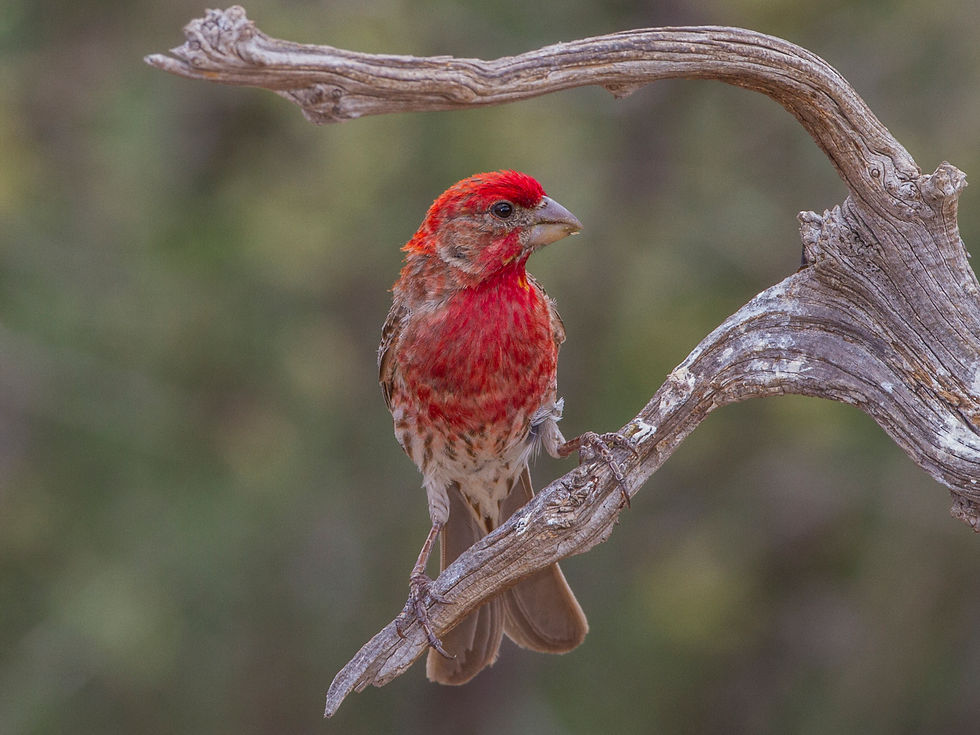Christmas Mountain Oasis
- ghill1
- Jul 4, 2016
- 3 min read

The Lucifer Hummingbird, a hard-to-find breeding the Big Bend area is the star of the show at Christmas Mountain Oasis.
After a night of recovery in the lodge at the Chisos Basin following our ordeal with a high-country thunderstorm in the Chisos Mountains, Trevor and I headed out on the morning of June 15 to visit Carolyn Ohl at her private ranch outside the boundaries of Big Bend National Park. Through decades of dedicated bird feeding and habitat restoration, Carolyn has created a feeding station that is now the best place in North America to get great views of Lucifer Hummingbirds and Varied Buntings (and I will add Scaled Quail until I see a better place).
I contacted Carolyn a week before our proposed visit and she was gracious in inviting us to visit her station. She gave us directions and a combination to a lock on a gate and even a map to make sure we didn't get lost. The directions were great and at mid-morning we pulled up to the feeding station. We didn't see Carolyn as we pulled in so we just sat on the benches in front of the feeders and started to enjoy the birds.

A female Lucifer Hummingbird at the feeders at Christmas Mountain Oasis.

A White-winged Dove at the feeders at Christmas Mountain Oasis.

A female Scaled Quail at the feeders at Christmas Mountain Oasis.

A female Rufous-crowned Sparrow at the feeders at Christmas Mountain Oasis.
We were way past the peak for Lucifer Hummingbird, Varied Bunting, and essentially every bird that comes to her feeder, but the show was still excellent. Almost immediately we had both male and female Lucifer Hummingbirds right in front of us. I had heard that the setup at Carolyn's house was not good for photography, but I found it to be excellent. There were nice plantings of native vegetation and attractive perches for the birds. On the day of our visit, there was high cloudcover so we had wonderful diffuse lighting.
It is apparently a big year for Scaled Quail in the Big Bend region and we had been seeing them regularly since we passed Marathon on our way into the park a couple of days before. Unfortunately, the way in which we were invariably seeing them was bursting into flight or running along the roadside. Not a single bird has given me a chance for more than a blurry, distant photo. So it was much appreciated when two Scaled Quail flew into the feeding area. At first they stayed in the back bushes and I was afraid I might be thwarted yet, but after a few minutes they wandered out and give abundant chances for nice photos. They are a subtly beautiful bid, lacking the head plumes and colors of other New World Quail species but with a stunning black-and-gray pattern that give their body plumage the appearance of being scales instead of feathers.
After we had sat and photographed birds for a while, Carolyn came by having been working on a trail to the slopes of Christmas Mountain, which loomed over the feeding station. She lamented the lack of bird compared to a month before, but we were quite content with the show that morning.

The House Finches at Carolyn Ohl are of uncertain subspecies affinity.
One of the birds that I was most happy to have a chance to study at length and photograph were the House Finches, the species that is my main study bird. The finches in this part of Texas are currently described as a different subspecies--Haemorhous mexicanus potosinus--different than virtually every other House Finch north of the Mexican border which would all be Haemorhous mexicanus frontalis according to a review of the taxonomy of the species by Moore in 1939.

A figure from Moore's 1939 taxonomic review of Carpodacus mexicanus showing his division of House Finch populations into subspecies. Not that the bird in Big Bend National Park would, according to Moore, belong to the subspecies C. m. pototsinus. The birds at Christmas Mountain Oasis are ambiguous according to Moore.
Unfortunately, there was no gentetic resources available during Moore's era and species and subspecies were divided according to visual assessment of specimens. The birds that Moore examined from the area north of Big Bend National Park were apparently ambiguous as to subspecies affinity based on morphology. So, there is plenty of reason to be interested in the House Finches at Christmas Mountain Oasis. To me, they did seem to be brighter and more extensively red than typical frontalis birds.
Comments